Info
Subfamily: Chloridoideae
Genus etymology: Eleusine = Eleusis [Greece] is a town where Ceres, the goddess of agriculture was worshiped, likely a refernce to this grass being a common weed of agriculture
Species etymology: indica = From India, although this is found across much of Africa and tropical Asia
Photosynthetic type: C4 (warm season)
Nativity: naturalized - accidental
First recorded in Hawaiʻi: 1826
Map
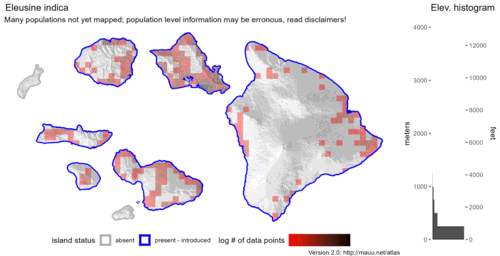

Inflorescence
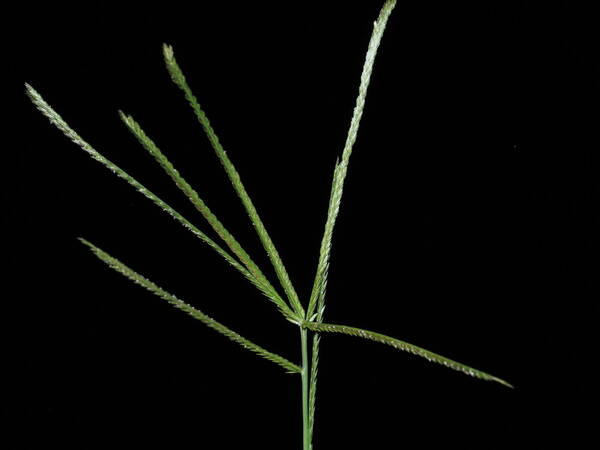
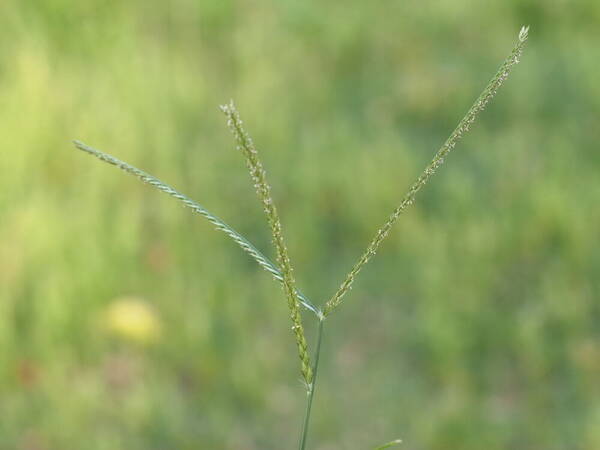
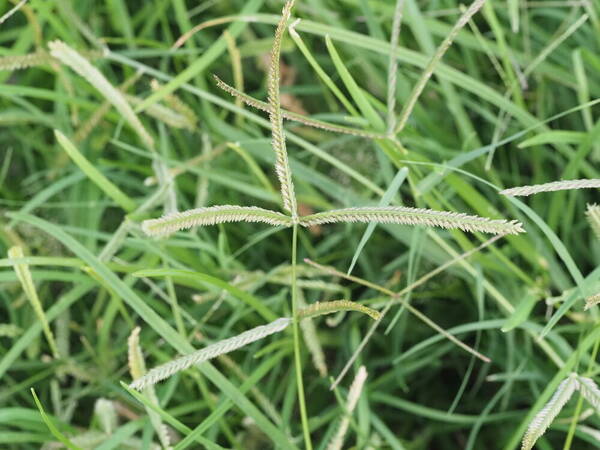

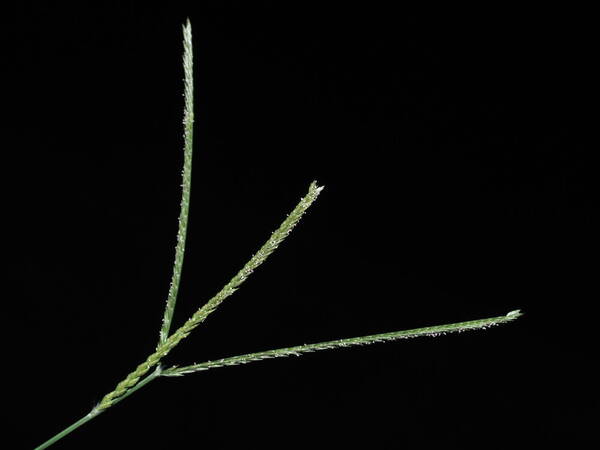
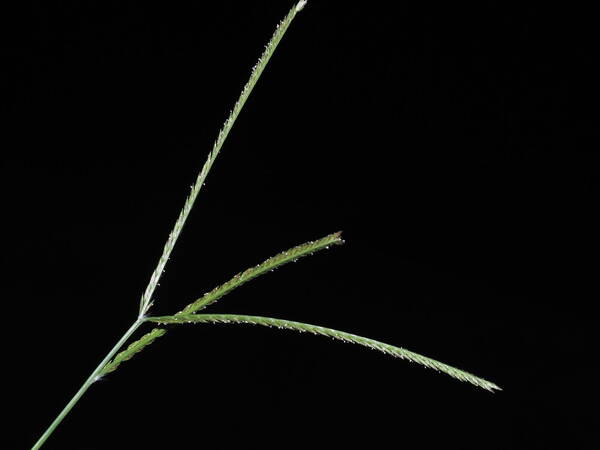
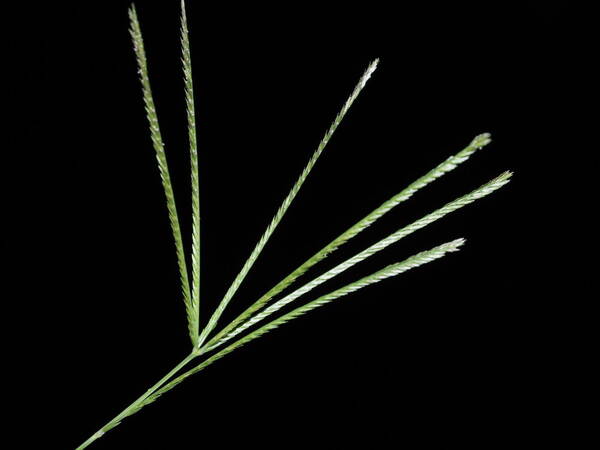
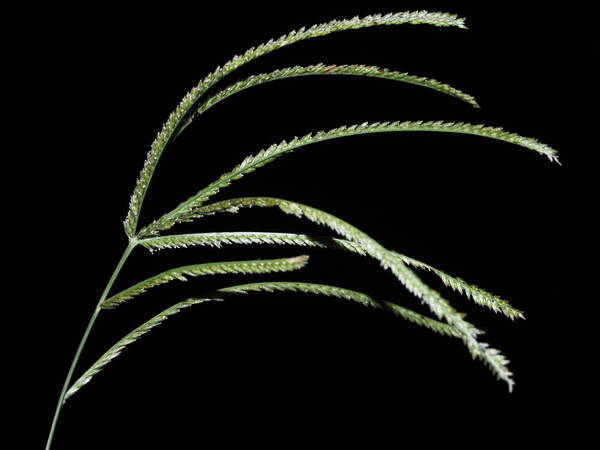
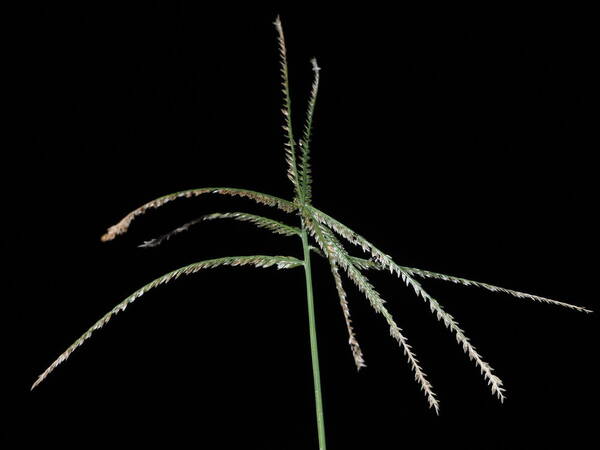
Plant
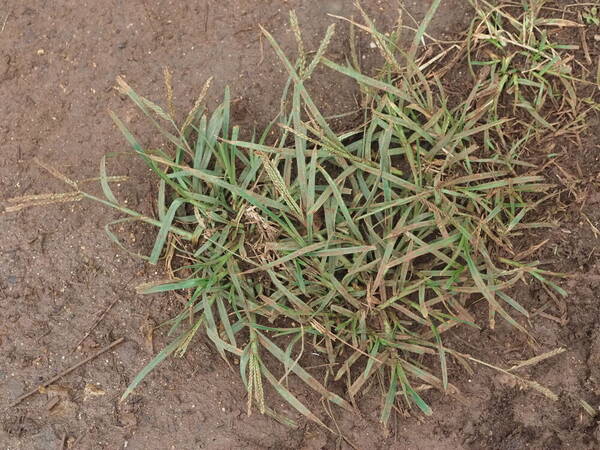
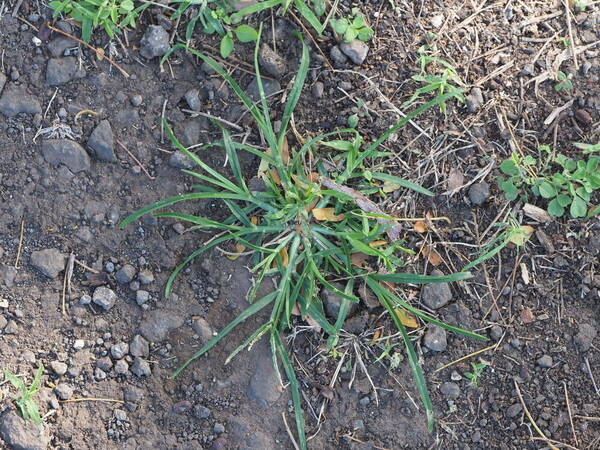
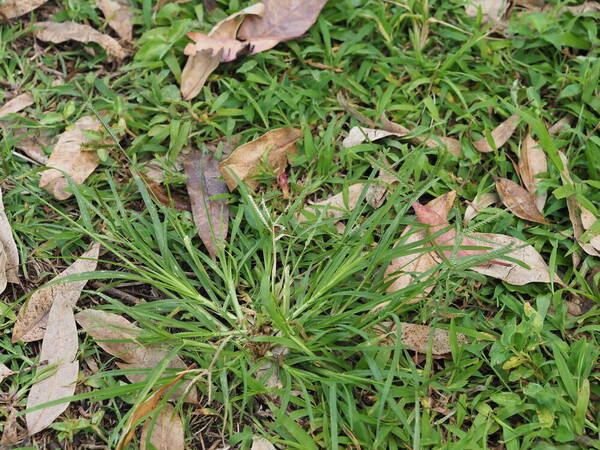
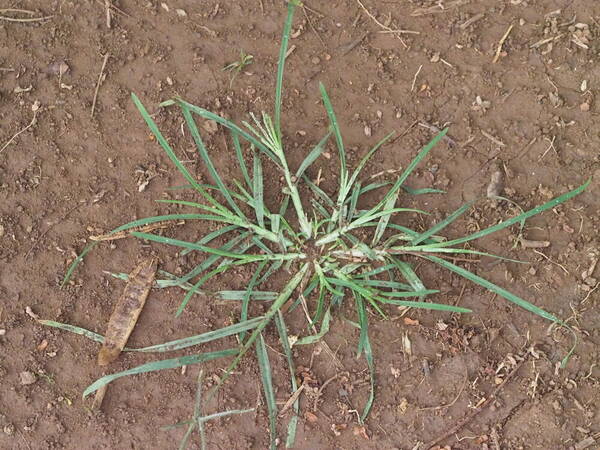
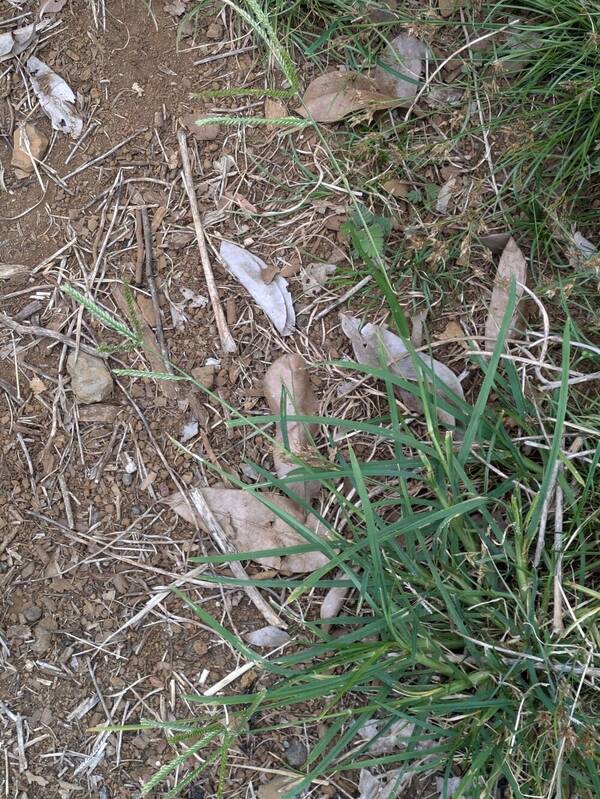
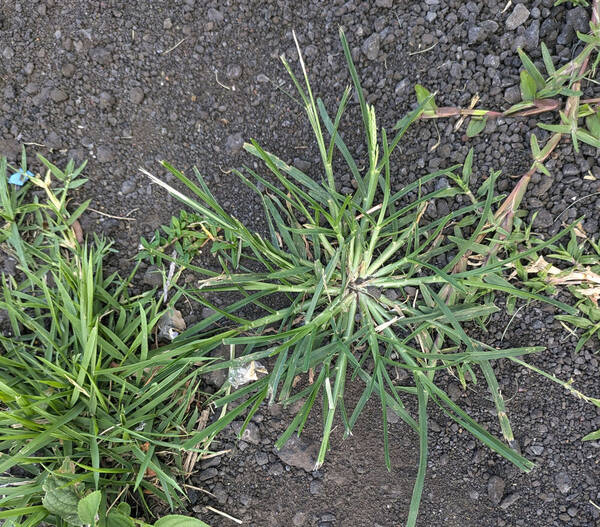
Habit
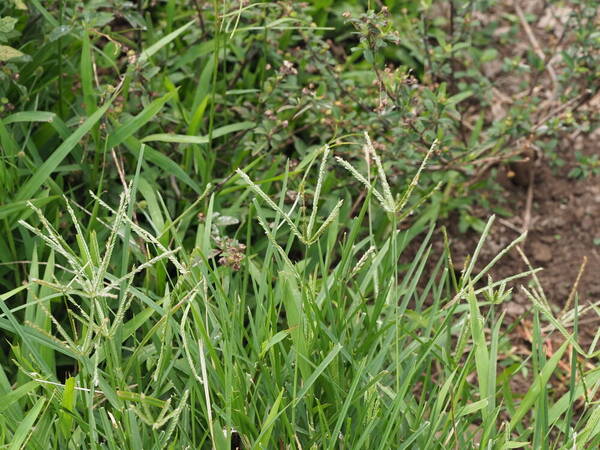
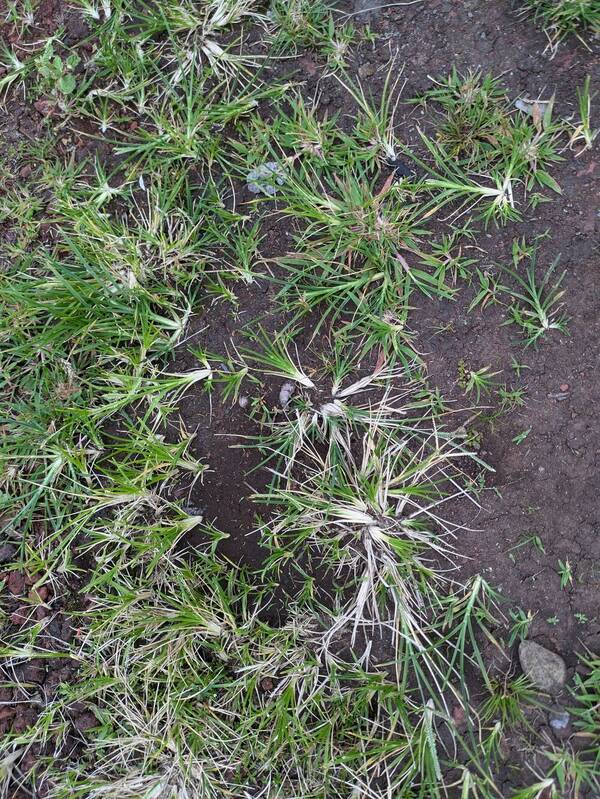
Spikelets
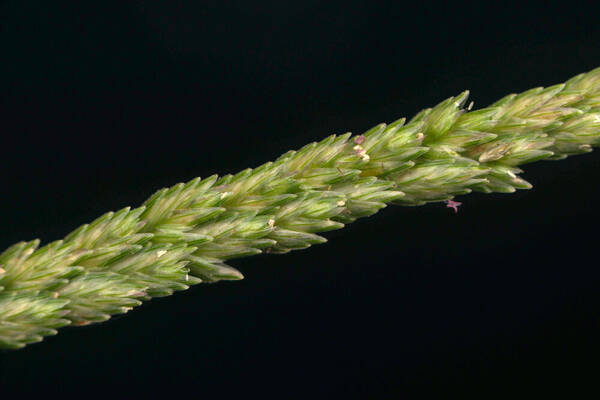

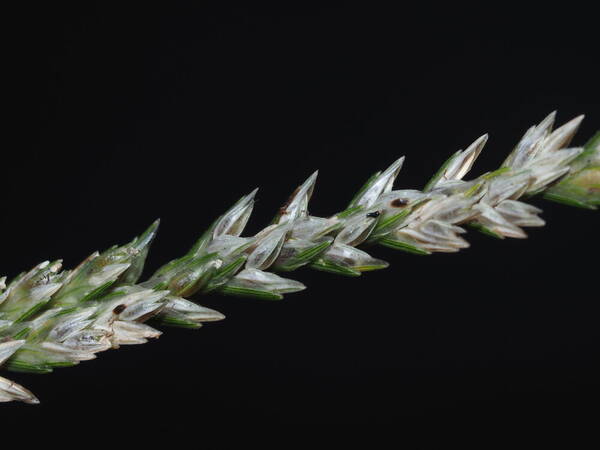
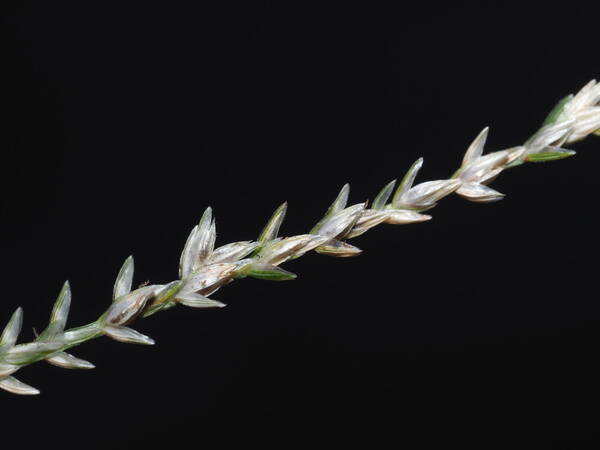
Description
Tufted annual; culms 15–85 cm. high, slender to moderately robust, erect or geniculately ascending, often branching at the lower nodes. Leaf-blades usually folded, 5–35 cm. long, 2.5–6 mm. wide; ligule 0.6–1 mm. long. Inflorescence digitate, composed of 1–10(–17) slender ascending spikes 3.5–15.5 cm. long, clustered at the top of the culm, a few spikes often set below the main apical cluster. Spikelets 3–9-flowered, elliptic, 4.6–7.8 mm. long, pale green or brownish green; glumes acute, the lower 1–3-nerved, lanceolate to narrowly lanceolate-oblong in profile, 1.1–3.2(–3.9) mm. long, broadly to very narrowly winged on the keel, the upper with 2–3 nerves close to each side of the central thickened keel, narrowly elliptic-oblong in profile, 1.8–4.7 mm. long; lemmas lanceolate in profile, 2.4–4.8 mm. long, an additional nerve (rarely 2) close to each side of the upper part of the central keel, the keel broadened above the middle, lateral nerves often rather obscurer the tip acute to subacute. Grain elliptic or oblong, 1–1.6 mm. long, usually concave on the hilar side.
(Description source: Clayton, W.D. 1970. Flora of Tropical East Africa. Gramineae (Part 1). Crown Agents for Oversea Governments and Administrations, London. 176 pp. )
Caespitose annual; culms slender, up to 85 cm tall, erect or geniculately ascending, often branching from the lower nodes; ligule sparsely and minutely ciliolate; leaf laminas 5–25 cm × 2.5–6 mm, usually folded.Racemes 1–14, 2.5–15.5 cm × 3–5.5 mm.Spikelets 4.3–5.2 mm long, elliptic; glumes acute, the inferior 1.1–2.3 mm long, 1-nerved, the superior 1.8–2.9 mm long; lemmas 2.4–3.6(4) mm long, lanceolate in profile, acute to subacute.Caryopsis 1–1.3 mm long, elliptic or lanceolate-elliptic, obliquely striate and with fine close lines perpendicular to the striae.Diploid, 2n = 18.
(Description source: Pope, G.V. (ed). 1999. Flora Zambesiaca. Volume 10. Part 2. Kew, London. 261 pp. )
Plants annual. Culms 30-90 cm, erect or ascending, somewhat compressed; lower internodes 1.5-2 mm thick. Sheaths conspicuously keeled, margins often with long, papillose-based hairs, particularly near the throat; ligules 0.2-1 mm, truncate, erose; blades 15-40 cm long, 3-7 mm wide, with prominent, white midveins, margins and/or adaxial surfaces often with basal papillose-based hairs. Panicles with 4-10(17) branches, often with 1 branch attached as much as 3 cm below the terminal cluster; branches (3.5)7-16 cm long, 3-5.5 mm wide, linear. Spikelets 4-7 mm long, 2-3 mm wide, with 5-7 florets, obliquely attached to the branch axes. Lower glumes 1.1-2.3 mm, 1-veined; upper glumes 2-2.9 mm; lemmas 2.4-4 mm; paleas with narrowly winged keels. Seeds ovoid, rugulose and obliquely striate, usually not exposed at maturity. 2n = 18.
(Description source: Barkworth, M.E., Capels, K.M., Long, S. & Piep, M.B. (eds.) 2003. Flora of North America, north of Mexico. Volume 25. Magnoliophyta: Commelinidae (in part): Poaceae, Part 2. Oxford University Press, New York. 783 pp. http://floranorthamerica.org/Eleusine_indica )
Annuals; culms pale green, prostrate or ascending, 25-60 cm tall, glabrous, conspicuously compressed, usually profusely branched at base. Sheaths 3-9 cm long, conspicuously compressed, striate, keeled, sparsely long-pilose at throat and along margins; ligule 0.2-0.5 mm long, membranous, truncate or fimbriate; blades 15-25 cm long, 4-10 mm wide, conspicuously keeled, scabrous on keel and on margins near apex, upper surface sparsely longpilose with a conspicuous translucent yellow band 2-3 mm long arising from base, apex acute. Racemes 2-6, umbelliform, one 4-10 cm long; spikelets 3-8-flowered, 5-7 mm long, glabrous; glumes broad, keeled, margins hyaline or purple-tinged, first glume 2-3 mm long, 2-4-nerved, second glume 3-4 mm long, 6-9-nerved; lemmas 3- 3.5 mm long, keel scaberulous, often with 1-2 indistinct nerves, apex acute; palea 2.5- 3 mm long, apex acute. Caryopsis dark reddish brown, 1-2 mm long, ridged longitudinally, striated with concentric rings. [2n = 18, 36, 54.]
(Description source: O’Connor, P.J. 1990. Poaceae, pp. 1481–1604. In: Wagner W.L., Herbst D.R. & Sohmer S.H. (eds.)., Manual of the flowering plant of Hawaiʻi. Vol. 2. University of Hawaii Press & Bishop Museum Press, Honolulu )